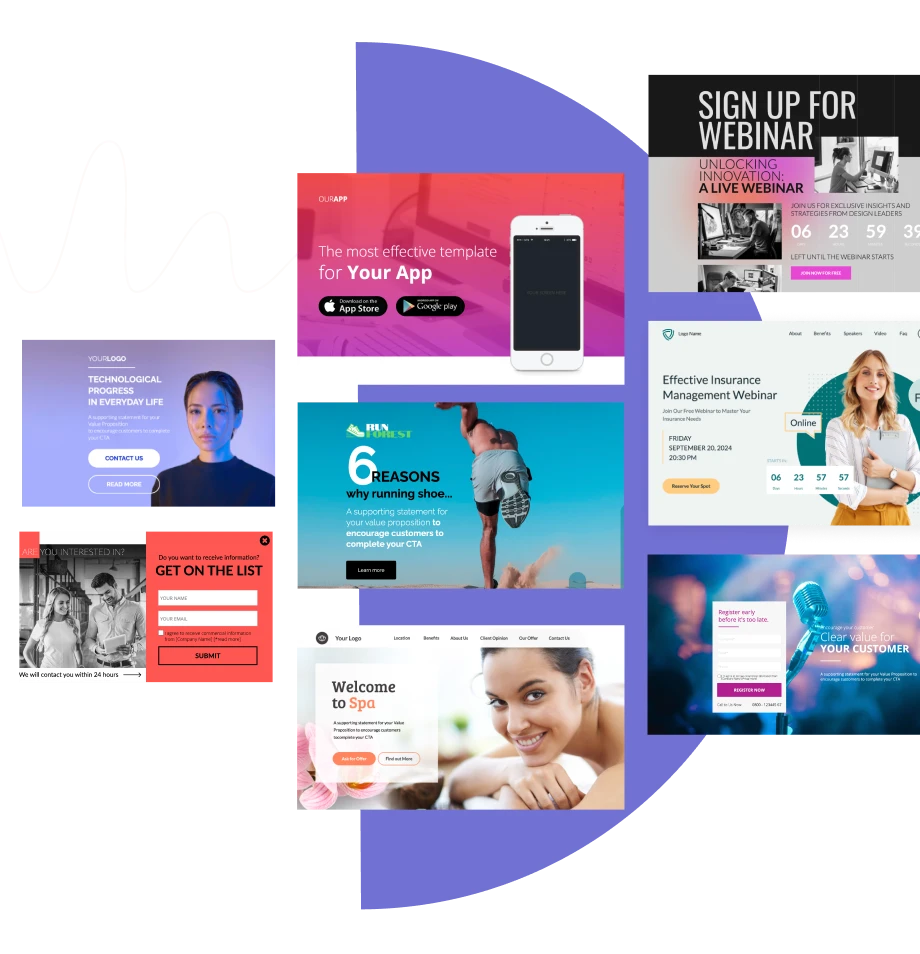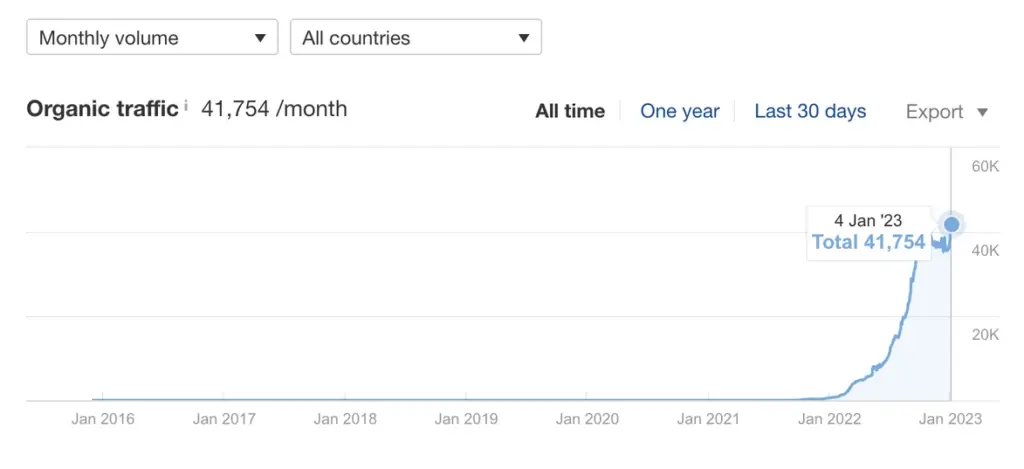Ecommerce digital marketing involves online marketing tactics and platforms to promote products, boost sales, and connect with customers in the world of online shopping. It pulls together different digital channels like search engines, social media, email, and paid advertising to craft smart and comprehensive marketing strategies for ecommerce businesses. According to Koen van Gelder, retail e-commerce sales are projected to exceed 4.1 trillion U.S. dollars worldwide in 2024, with expectations for further growth in the coming years. Additionally, McKinsey reported a 20% increase in consumers shifting to e-commerce channels in 2020, highlighting just how crucial it is to have a solid digital marketing strategy in place.
This article covers the key elements of ecommerce marketing strategies, offering step-by-step tactics, tips, and examples to maximize your efforts and ROI. Dive into the full article to uncover actionable insights that can transform your ecommerce business and elevate your brand to new heights!

What is Digital Marketing in Ecommerce?
Digital marketing in ecommerce uses various online channels and techniques to promote products, attract potential customers, and drive conversions on an ecommerce platform. Digital marketing ecommerce drives online sales through strategies like search engine optimization (SEO), paid advertising (Google Ads, Meta Ads), content marketing, social media engagement, email campaigns, and customer retention methods such as loyalty programs. The primary goal is to reach a target audience and increase sales by utilizing online marketing tools and data-driven approaches.
For ecommerce businesses, digital marketing provides the foundation for reaching a broader audience than traditional retail methods. With consumer shopping habits continuously evolving, businesses need to meet customers where they are—online. Digital marketing ecommerce focuses on increasing customer lifetime value by fostering relationships through targeted ads on Google or curated Instagram feeds. This approach enables companies to build awareness, nurture leads, and convert visitors into loyal customers.
What is The Best Digital Marketing Strategy for Ecommerce?
The best digital marketing strategy for ecommerce is a layered approach that combines a solid technical foundation with automation and customer-centric tactics. It’s a mix of website optimization, paid advertising, email marketing, content & SEO strategy, social media marketing, and customer retention tasks.
Here’s the most effective digital marketing strategy for ecommerce, organized by priority and timeline:
Start with a foundation setup in month 1. Your ecommerce site needs to load under 2 seconds on mobile devices. Implement an exit-intent popup offering a 10% discount for first purchases. Get Google Analytics 4 running with enhanced ecommerce tracking to monitor user behavior. Structure your product categories logically and install heatmap tracking on your top revenue-generating products to understand user interaction patterns.
Moving into customer journey automation during months 1-2, focus on email marketing sequences. Create a four-part welcome series: start with an immediate welcome email containing a 15% time-sensitive discount, follow up with your brand story and bestsellers two days later, showcase social proof and reviews on day four, and finish with category-specific promotions on day seven. For abandoned carts, send three strategic emails: first within one hour as a gentle reminder, then at 24 hours with product details and social proof, and finally at 48 hours with a limited-time 10% discount.
Launch your paid advertising strategy in months 2-3. Structure Google Ads by segmenting shopping campaigns based on product margins. Allocate 60% of your budget to shopping campaigns and 40% to search campaigns. Set your target ROAS at 300% initially. For Meta Ads, split your budget 70/30 between prospecting and retargeting. Create broad audience prospecting campaigns and use look-alike audiences at 1%, 3%, and 5% levels. Implement dynamic product ads for retargeting.
Develop your content and SEO strategy during months 3-4. Publish two weekly blog posts, dividing content between product guides (40%), how-to content (30%), and industry news (30%). Focus on commercial keywords like product reviews, “best of” lists, and comparison content. Make sure each piece addresses specific customer pain points and questions.
For social media and UGC in months 4-5, maintain a consistent Instagram presence with five weekly feed posts, daily stories, and three weekly reels. Divide content between product showcases (40%), user-generated content (30%), educational material (20%), and behind-the-scenes content (10%). Engage with comments within two hours of posting.
Implement customer retention programs in months 5-6. Design a loyalty program where customers earn one point per dollar spent, with 100 points equaling a $5 reward. Create three tiers: Bronze (0-500 points), Silver (501-1000 points), and Gold (1000+ points). Offer exclusive benefits at each tier to encourage progression.
Track these key performance metrics religiously: keep Customer Acquisition Cost under $30, maintain Return on Ad Spend above 3x, aim for email click-through rates above 2.5%, reduce cart abandonment rate below 65%, ensure Customer Lifetime Value exceeds three times CAC, and push mobile conversion rates above 2%.
Establish a monthly optimization routine. Week one focuses on ad performance review and bidding strategy adjustments. Week two centers on analyzing customer feedback and updating email sequences. Use week three for SEO audits and competitor analysis. Dedicate week four to comprehensive performance reporting and strategy adjustments.
Digital marketing ecommerce optimizes conversion rates with A/B testing, analyzing traffic sources, and refining landing page designs to enhance user experience and ultimately drive higher sales. Regular adjustments based on data insights will ensure continuous improvement and better alignment with customer preferences.
Remember to adapt this ecommerce strategy based on your specific circumstances: product pricing, competition level, available budget, target audience demographics, and seasonal factors all play crucial roles in fine-tuning this approach.
How to Create Digital Marketing Strategy for Ecommerce?
To create a digital marketing strategy for ecommerce, you need to define your target audience, conduct market research, select marketing channels, create a content plan, optimize your website for conversions, and establish metrics to track performance. Start by identifying your ideal customer through buyer personas, focusing on their needs, preferences, and behaviors. Conduct thorough competitor analysis to see how other ecommerce businesses are positioning themselves and spot gaps or opportunities. Use this research to understand what marketing channels, from SEO to social media and email, will best reach and engage your audience.
Once you’ve identified the channels, create a content plan that resonates with your audience at every stage of the buying journey. For example, blog posts, product guides, and email campaigns help build awareness, while retargeting ads, product videos, and social proof like reviews work best for nurturing leads and driving conversions. Ensure your content is not only valuable but also optimized for SEO. Don’t forget to design your ecommerce website with conversion rate optimization (CRO) in mind, implementing features like clear calls-to-action, easy navigation, and mobile responsiveness to reduce friction and boost sales.
Lastly, it’s critical to set up performance metrics and track your results. Use tools like Google Analytics or native ecommerce tracking systems to measure traffic, sales, and customer engagement across channels. Regularly review this data to optimize campaigns and adjust your strategy based on what’s working and what’s not. Whether you’re scaling your email list or improving ad ROI, an agile approach will allow your ecommerce digital marketing strategy to grow alongside your business.
5 Tips in Digital Marketing for Ecommerce
Discover five powerful digital marketing tips for ecommerce that can drive more conversions and build stronger customer loyalty. From implementing abandoned cart email sequences and leveraging user-generated Instagram content, to optimizing your Google Shopping feed and creating product-specific landing pages, these tactics are designed to help you capture more sales and elevate your brand. Plus, learn how post-purchase cross-sell emails can increase your average order value by encouraging repeat purchases.
1. Implement Abandoned Cart Email Sequences
Abandoned cart emails are one of the highest-performing ecommerce marketing strategy, helping you recover lost sales. The key is to strike while the interest is still fresh. Research shows that sending the first recovery email within one hour of cart abandonment can achieve an impressive 47% open rate. This first email should serve as a gentle reminder, including a clear product image and details of the items left behind.
The second email, sent 24 hours later, should offer a time-sensitive discount (typically between 10% and 15%) to encourage the customer to complete their purchase. By the time you send the third email, at 72 hours, urgency is your best friend. Use phrases like “Last chance to get [product]” to create a fear of missing out (FOMO) that motivates action. This three-step email sequence can significantly increase your recovery rate, turning otherwise lost opportunities into conversions.
Additionally, digital marketing ecommerce retargets cart abandoners with ads, which can further complement your email strategy by keeping your brand top-of-mind and enticing customers to return to complete their purchase through visually appealing reminders across various platforms.
2. Leverage Customer-Generated Product Photos in Instagram Shopping
Instagram is one of the most powerful platforms for ecommerce brands, especially when it comes to visually-driven products. Customer-generated photos (images shared by real users of your products) are far more engaging than branded content. In fact, studies show that user-generated content (UGC) boosts engagement by 21% compared to traditional brand posts.
To maximize this, encourage your customers to share photos of your products in use and feature these images on your Instagram feed with product tags. These tags allow users to shop directly from the posts, creating a seamless purchasing experience.
Additionally, you can create Instagram Story highlights that showcase how real customers are enjoying your products. This kind of social proof not only builds trust but also adds authenticity to your brand. Running Instagram Shopping ads using your best-performing UGC can further amplify engagement and drive sales. Don’t forget to include customer reviews alongside these photos for an added layer of credibility.
Digital marketing in ecommerce enhances user experience with personalized content, making it more relevant and engaging for each individual customer. This tailored approach not only improves conversion rates but also fosters customer loyalty, as users feel understood and valued by the brand.
3. Set Up Google Shopping Feed Optimization
Google Shopping is a crucial tool for ecommerce brands, but simply listing products isn’t enough. To get the most out of your Google Shopping campaigns, you need to optimize your product feed. Start by ensuring that your product titles are informative and keyword-rich. A good format to follow is: Brand + Product Type + Key Feature + Color. This not only helps your listings rank higher but also makes it easier for customers to understand what you’re offering at a glance.
Your product descriptions should be similarly detailed, with important search terms front-loaded to catch attention. Also, keep your prices and inventory up to date—Google favors listings that are current. High-quality images are essential too; aim for square images with a resolution of at least 800×800 pixels to showcase your products in the best light.
Additionally, make sure to include GTIN (Global Trade Item Numbers) or UPC codes where applicable, as this increases your product’s chances of appearing in relevant searches.
4. Create Product-Specific Landing Pages for Ad Campaigns
When running ad campaigns, sending potential customers to a generic homepage or product category page can cause them to lose interest quickly. Instead, create dedicated landing pages for each product you advertise. These pages should be laser-focused on converting the visitor by highlighting the specific product, its features, and why it’s the perfect choice for them.
Keep the “Add to Cart” button prominently above the fold so it’s easily accessible, and ensure the page loads quickly—ideally under 2.5 seconds on mobile devices. Incorporate trust signals such as customer reviews, clear shipping information, and a detailed return policy to reduce any doubts.
Adding urgency elements like stock availability (“Only 5 left in stock!”) or time-limited discounts can further encourage users to act quickly. A well-designed landing page can dramatically improve the conversion rate of your ad campaigns, making every click count.
5. Implement Post-Purchase Cross-Sell Email Automation
The moment after a customer makes a purchase is an ideal time to suggest complementary products. Cross-sell email automation allows you to capitalize on this opportunity without being pushy. About 5-7 days after delivery, send the customer an email suggesting products that complement their original purchase. For example, if they bought a camera, recommend a tripod, lens, or carrying case. Use actual purchase data to ensure your suggestions are relevant, which can lead to higher engagement and conversions.
Include a section titled “Customers Also Bought” to showcase popular complementary items and offer a small bundle discount to sweeten the deal. Be sure to include user-generated reviews of these recommended products to build trust and encourage further purchases. By nurturing this post-purchase relationship, you can turn one-time buyers into repeat customers while increasing your average order value.
3 Examples of Digital Marketing in Ecommerce
Let’s explore three remarkable ecommerce digital marketing case studies that demonstrate the perfect alignment of channel strategy, value proposition, data optimization, and customer-centricity. In each example, we see how MVMT Watches, Casper Mattress, and Dollar Shave Club highlight how diverse digital marketing strategies (from influencer partnerships and SEO to viral video content) can fuel e-commerce success.
Let’s explore digital marketing examples of how these ecommerce companies achieved remarkable results.
1. MVMT Watches – Social Media Strategy
MVMT Watches executed a highly successful digital marketing strategy, leveraging a direct-to-consumer (D2C) model that was driven by an extensive use of social media and influencer partnerships. This approach allowed MVMT to bootstrap its way to a $100 million exit within five years. The company focused heavily on Facebook and Instagram advertising and influencer marketing campaign to promote products, targeting young, trend-conscious consumers with minimalist, stylish designs. By creating a sense of community and using lifestyle-focused content, MVMT was able to disrupt the traditional watch industry.
MVMT invested significantly in its paid social media efforts, spending millions of dollars on digital ads while also scaling organically through customer word-of-mouth and user-generated content. This marketing model helped MVMT achieve impressive growth without relying on traditional retail channels, contributing to its $300 million acquisition by Movado.

2. Casper Mattress – Content Marketing & SEO Domination
Casper Mattress built its success largely through a content-focused SEO strategy, driving traffic organically to its website and utilizing a combination of paid search, social media, and influencer marketing. Casper leveraged blog content to target customers in various stages of the buying journey, particularly focusing on educational topics like sleep health.
This strategy not only positioned them as thought leaders in the sleep industry but also helped them rank high for search terms related to sleep and mattresses, contributing to their growth. The company combined this SEO-driven content marketing with aggressive digital advertising on platforms like Facebook and Google to scale their online business rapidly.

3. Dollar Shave Club – Viral Marketing
Dollar Shave Club’s rise to a billion-dollar company was propelled by its viral marketing strategy, particularly its famous 2012 video, “Our Blades Are F***ing Great,” which garnered over 4.75 million views in the first three months. The company used this video as a key component of its branding, focusing on humor and a clear value proposition: affordable, high-quality razors delivered to your door.
This viral moment was supported by a robust content marketing strategy and email campaigns, along with strategic use of social media platforms. Dollar Shave Club’s ability to leverage humor and simplicity in its messaging made it stand out in a crowded market, ultimately leading to its acquisition by Unilever for $1 billion.
Why is Digital Marketing Important For Ecommerce?
Digital marketing is crucial for ecommerce because it connects businesses to a global audience, offers personalized customer experiences, and allows for data-driven decision-making that drives growth.
It enables an online store to scale rapidly by using targeted advertising to reach the right customers at the right time, optimizing visibility through SEO to attract organic traffic, and leveraging email marketing to nurture relationships with both potential and returning customers. Social media platforms also play a significant role, allowing businesses to engage with their audience directly, build brand loyalty, and foster community. By analyzing data from these channels, businesses can continually optimize their strategies, resulting in higher conversions, improved customer retention, and increased revenue.
What’s The Use of Landing Pages in Digital Marketing for Ecommerce?
Landing pages in ecommerce digital marketing provide focused, high-conversion destinations for specific campaigns, products, or promotions. Rather than sending potential customers to a generic homepage, a well-crafted landing page directs them to a page tailored to their search query or ad click. This reduces friction, streamlines the user experience, and makes it easier for visitors to find exactly what they’re looking for, increasing the likelihood of a conversion.
For instance, if you’re running a paid ad campaign on Google for a specific product, the ad should lead customers directly to a landing page dedicated to that product. This page should clearly showcase the item’s benefits, have a visible “Add to Cart” button, and include relevant information such as shipping details and return policies. To enhance urgency, you can also incorporate elements like limited-time offers or stock availability.
Using a landing page builder like Landingi, which is specifically designed to help ecommerce businesses, can make this process seamless. Landingi allows you to create, customize, and optimize landing pages without needing advanced technical skills, making it the ideal tool for both beginners and experienced marketers. With its drag-and-drop editor, customizable ecommerce templates, ecommerce features, and over 180 integration options, Landingi empowers businesses to launch high-converting landing pages quickly, making it one of the best choices for building landing pages in ecommerce marketing.
What’s The Use of AI in Digital Marketing for Ecommerce?
AI in digital marketing can personalize customer experiences, automate tasks, and enhance decision-making. AI tools analyze vast amounts of data to identify patterns in customer behavior, allowing businesses to offer personalized product recommendations based on past purchases or browsing history.
For example, AI-driven recommendation engines, like those used by Amazon, suggest products customers are likely to buy, increasing sales and customer satisfaction. AI also powers chatbots that provide 24/7 customer support, answer frequently asked questions, and guide customers through the shopping process in real time, enhancing user experience and reducing abandoned carts.
Furthermore, AI helps with predictive analytics, enabling businesses to forecast future trends, optimize pricing strategies, and refine their ad targeting for better ROI. By streamlining operations and delivering relevant, timely messages, AI helps ecommerce businesses become more efficient and customer-centric.
What Are The Benefits of Digital Marketing for Ecommerce?
Digital marketing benefits e-commerce businesses by increasing reach, targeting marketing, achieving measurable results, reducing costs, and fostering loyalty.
Digital marketing allows online stores to reach a global audience, breaking geographical barriers and expanding their customer base. Targeted marketing is another major advantage, as digital marketing enables businesses to reach specific customer segments based on demographics, behavior, and interests. This ensures that marketing efforts are focused on the most relevant audiences, leading to higher engagement and conversion rates.
Additionally, digital marketing offers the ability to track and measure performance in real-time. Metrics such as conversion rates, customer acquisition costs, and return on ad spend can be monitored, allowing businesses to adjust their strategies for optimal results. It also provides cost efficiency, as businesses can allocate their budgets to the most effective channels, such as SEO, email marketing, or paid ads. Lastly, digital marketing facilitates direct communication with customers, fostering loyalty through personalized experiences, ongoing engagement, and affiliate marketing program. The ability to quickly adapt and optimize makes digital marketing an essential tool for growing and scaling an ecommerce business.
What Are The Limitations of Digital Marketing for Ecommerce?
Ecommerce marketing in a digital environment can be limited by high competition in paid advertising, the complexity of omnichannel marketing, and challenges in keeping up with changing consumer behaviors. Additionally, ecommerce websites may struggle with increasing customer acquisition costs if they do not optimize their strategies based on data insights and customer feedback.
Conclusions
Ecommerce online marketing is essential for driving ecommerce sales through the use of digital channels such as search engines, social media, and email marketing. To succeed in this competitive landscape, online stores need to implement data-driven strategies, optimize user experiences, and continuously refine their approaches. By focusing on improving the customer journey and leveraging search engines effectively, businesses can enhance their visibility and boost conversions. A well-executed digital marketing strategy is key to achieving long-term success in today’s ecommerce environment.
In addition, if you’re looking to enhance your digital marketing efforts, consider trying Landingi for free – a platform that offers a powerful landing page builder designed to help you create high-converting pages with ease, making it an invaluable tool for boosting your online store’s performance.






